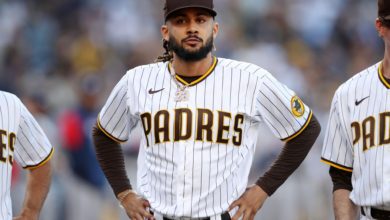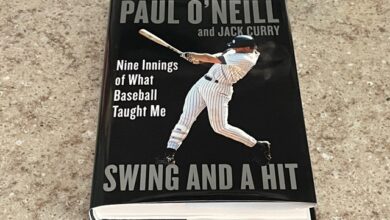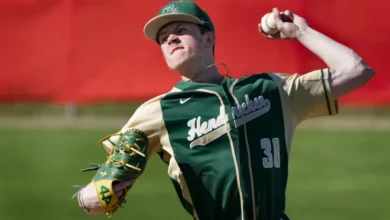
It’s not often a talented and young pitcher like San Diego’s Mat Latos gets traded while he still has several years of service time to accrue before being eligible for free agency. When trading away such an asset, a team better get a damn good return or it’ll be electronically ravaged by the Keith Laws and Kevin Goldsteins of the interwebs. I think it’s safe to say the haul San Diego got from Cincinnati for Latos at least puts prospect pundits in wait-and-see mode. Here are the details of the trade, followed by my thoughts on the players in the trade, all of whom I have seen in person.
The Reds get Mat Latos, while the Padres get Yasmani Grandal, Yonder Alonso, Edinson Volquez and Brad Boxberger.
In Latos, the Reds get a number-two starter who still has some projectability left. Latos posted a 3.16 FIP last year despite struggling early when it was clear he had seen a dip in velocity on all of his pitches. While we certainly don’t want to overlook Latos’ issues with consistently strong velocity, his PitchFx data shows an upward trend in velocity as the season progressed. At least that’s a bit comforting for Reds decision makers.
While you probably have a pretty good idea about the kind of player Latos is and is likely to be, you might not know about the Reds prospects heading west to San Diego.
The prospect mentionid at the forefront of the deal is first baseman, and former Miami Hurricane, Yonder Alonso. You’ve likely heard him mentioned as a potential trade chip for the Reds since Alonso’s big-league spot is blocked by one of baseball’s best, Joey Votto. Alonso has a terrific approach, running deep counts and working walks with impressive regularity. He sprays the ball all over the field thanks to his simple, balanced swing. The bat speed is good, and there’s some leverage in the swing, though Alonso hasn’t hit for as much power as you’d like to see from a first-round, first-base prospect. While some of that can be attributed to a broken hand at the end of 2009, I think a lot of it has to do with the hip rotation (or lack thereof) in Alonso’s swing. He’s a thick guy, not very flexible, and the kind of hip rotation that generates power-producing torque just isn’t there. Some scouts think the power will come, but I do not. It would have been here already.
Defensively, Alonso could be an adequate first baseman, but the Reds had been trying him in left field hoping he could fake it out there and come to the big leagues to steady a revolving door of garbage (apologies to Chris Heisey, who I think is pretty good). They even tried him at third base, but that went horribly, to put it mildly. Alonso is slow of foot and is obviously uncomfortable in the outfield. Even the most routine fly balls look like an adventure. He does have an above-average arm for a left fielder, but it’s more likely he’s a first baseman only. With Anthony Rizzo already in the fold in San Diego, where does Alonso fit defensively? Ken Rosentahl is reporting they may look to spin Rizzo somewhere else. In summation, Alonso is an average major league first baseman.
The best prospect in the deal is catcher Yasmani Grandal. Grandal, another Miami draftee, was in a similar predicament in that he was blocked by a superior, more advanced talent in Devin Mesoraco. The switch-hitting Grandal has a contact-oriented, inside-out swing from the right side but has more raw pop and is more pull-oriented from the left side. There’s some noise, especially in his lower half, and he has a tendency to get out on his front foot when hitting lefty, but the plate coverage is enticing. Between the two swings he projects as a slightly above-average hitter, a plus for a catcher. Across three levels this season, Grandal posted a .300/.400/.500 line and finished his year with a modest showing in the Arizona Fall League, where he was likely exhausted. While his arm is average, it plays down due to a slow transfer. He’s been advertised as an advanced receiver, though he looked a tad sloppy to me in Arizona. That could have been due to fatigue. He’s a nice, relatively advanced get for a franchise without a legitimate catching prospect who’s not a teenager.
The last prospect in the deal is reliever Brad Boxberger. Boxberger has a decent three-pitch mix (fastball, slider, change-up) and projects as a nice middle reliever. Boxberger’s fastball is a tick above average in the 90-93 mph range. He touched 95 mph in the Arizona Fall League Rising Stars game. The change-up has some nice screwball action but his control/command of it and his slider are both shaky. Exacerbating his secondary pitch issues is an inconsistent arm slot on the slider that major-league hitters will certainly pick up. In a nutshell, poor control of the secondary pitches relegated him to the bullpen, while a lack of raw stuff means he’s not a closer. He certainly has value, though.
As far as Volquez goes, his arm has been Dustied. I have no idea what to expect from him moving forward.
San Diego got an interesting return for a very good young pitcher. There are far too many “ifs” in this deal for me to favor either side. What can Volquez salvage? What’s to be done about the Rizzo/Alonso logjam? There’s a lot to sort though. Let’s sit back and watch.





